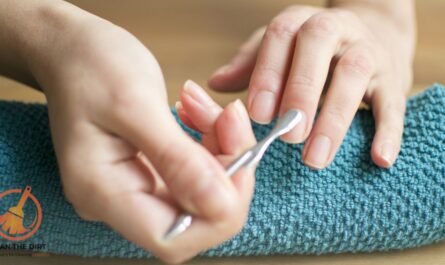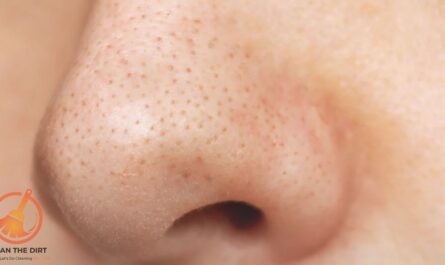Table of Contents
Introduction
Ear tubes, also known as tympanostomy tubes, play a crucial role in helping those who suffer from frequent ear infections or fluid buildup. However, like any medical device, they require proper care to function effectively. One of the most common issues that can arise is ear drainage. If you’re noticing this, it’s important to understand how to clean ear drainage from tubes safely and effectively.
Ear drainage can be unsettling, but it’s often a normal part of having ear tubes. This drainage could be clear, cloudy, or even tinged with blood, depending on the underlying cause. While it’s usually not a cause for alarm, leaving it unattended can lead to complications, such as infections or blocked tubes. That’s why knowing how to clean ear drainage from tubes is crucial for maintaining ear health and ensuring the tubes continue to work as intended.
In this guide, we’ll walk you through the best practices and steps on how to clean ear drainage from tubes. With a few simple tools and the right approach, you can keep your or your child’s ear tubes clean and functioning well, minimizing discomfort and the risk of further issues.
Understanding Ear Drainage and Ear Tubes
Ear tubes, or tympanostomy tubes, are small, cylindrical devices inserted into the eardrum to help drain fluid and ventilate the middle ear. These tubes are often recommended for individuals, especially children, who experience frequent ear infections or persistent fluid buildup. While they can significantly improve ear health, it’s essential to know how to clean ear drainage from tubes to prevent any complications.
What Are Ear Tubes?
Ear tubes are tiny, hollow cylinders usually made of plastic or metal, and they create a small opening in the eardrum. This opening allows air to flow into the middle ear, which helps prevent fluid buildup and reduces the risk of infections. For many, these tubes are a game-changer, offering relief from the discomfort of frequent ear problems.
Causes of Ear Drainage
It’s common for people with ear tubes to experience some level of ear drainage. This drainage can result from a variety of causes, including:
- Post-Surgery Fluid Release: After the insertion of ear tubes, some fluid may drain from the ear as it adjusts to the new condition.
- Ear Infections: Even with ear tubes, infections can occur, leading to the discharge of pus or other fluids.
- Allergies or Colds: These can cause fluid to accumulate in the ear, which may then drain through the tubes.
Understanding these causes is crucial because it helps in identifying the best approach how to clean ear drainage from tubes. Proper cleaning ensures that the tubes remain clear and functional, reducing the likelihood of further infections or complications.
Why It’s Important to Clean Ear Drainage
While some drainage is normal, especially right after tube insertion, it’s important to keep the area clean. If the drainage is left unchecked, it can lead to blockages in the tubes, making them less effective. In some cases, this can even lead to infections or more severe ear problems.
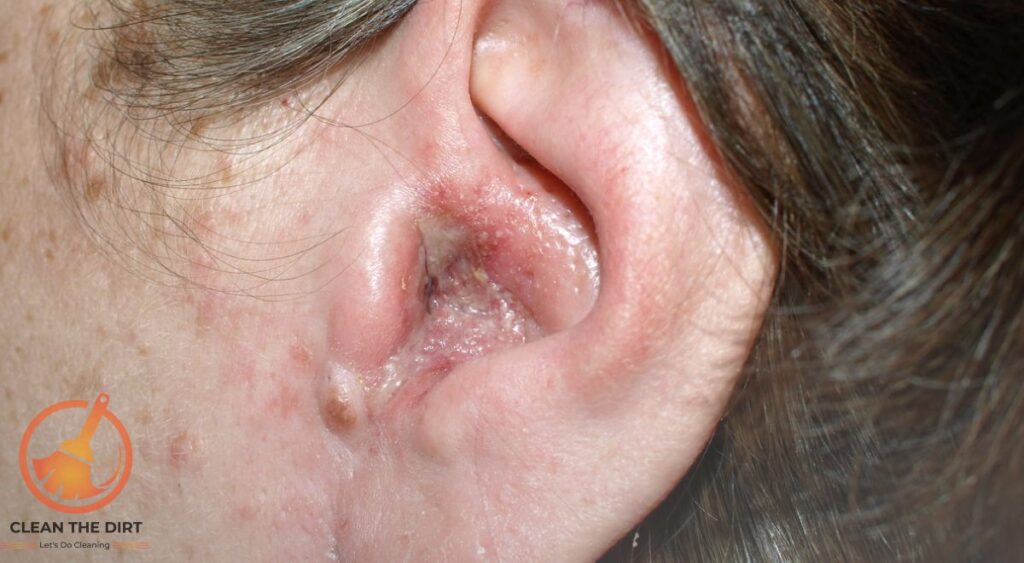
Knowing how to clean ear drainage from tubes is essential for maintaining ear health and ensuring that the tubes continue to serve their purpose. By regularly and carefully cleaning the drainage, you help keep the ears free of buildup, promote healing, and ensure that the tubes function as they should.
Maintaining overall hygiene is essential for good health, and knowing how to clean ear drainage from tubes is just one part of that process. For comprehensive care, consider exploring our guides on other related topics. Learn how to clean cuticles and keep your nails looking their best, or discover effective methods for how to clean belly button piercings and prevent infections. Proper hygiene is also important for facial care, so check out our tips on how to clean pores on your nose and achieve a clearer complexion.
Preparing to Clean Ear Drainage from Tubes
Before diving into how to clean ear drainage from tubes, it’s important to gather the right supplies and take necessary precautions. Proper preparation ensures that the process is safe and effective, minimizing any risk of irritation or further complications.
1. Gathering the Necessary Supplies
To clean ear drainage properly, you’ll need a few simple items. Here’s what to have on hand.
- Sterile Cotton Swabs: These are useful for gently wiping away any visible drainage around the ear. Make sure they are sanitary to prevent introducing any new bacteria into the ear.
- Saline Solution or Doctor-Recommended Ear Cleaning Solution: Saline solution or doctor-recommended solution can help to loosen and flush out any stubborn drainage that might be lingering near the tubes.
- Clean Towels or Soft Cloths: You’ll need these to dry the ear area after cleaning and to keep things tidy during the process.
- Hand Sanitizer or Soap and Water: Clean hands are a must when dealing with ear drainage, as this helps prevent any potential infections.
Having these items ready will make it easier to follow through with how to clean ear drainage from tubes without interruptions.
2. Precautions to Take
Cleaning ear drainage requires a gentle touch and a careful approach.
- Wash Your Hands Thoroughly: Before you start, ensure your hands are clean. This is crucial in preventing bacteria from entering the ear.
- Avoid Inserting Anything Deep into the Ear: When learning how to clean ear drainage from tubes, it’s important to remember not to insert cotton swabs, cloths, or any other objects into the ear canal. This can push drainage further into the ear or damage the tube.
- Be Gentle: The ear is a sensitive area, especially around the tubes. Use light, gentle movements to avoid causing irritation or discomfort.
- Check for Signs of Infection: If you notice redness, swelling, or foul-smelling drainage, it might be a sign of infection. In such cases, it’s best to consult a doctor before attempting to clean the ear.
3. When to Seek Professional Help
While understanding how to clean ear drainage from tubes is valuable, there are situations where professional help is necessary. If the drainage is persistent, thick, or accompanied by pain or fever, it’s time to contact a healthcare provider. These signs could point to an infection or other issues that need to be checked out by a doctor.
In summary, proper preparation is key when learning how to clean ear drainage from tubes. By gathering the right supplies and taking necessary precautions, you set the stage for a safe and effective cleaning process, helping to keep the ear tubes functioning well and maintaining overall ear health.
How to Clean Ear Drainage From Tubes? A Step-by-Step Guide
Cleaning ear drainage might seem difficult, but with the right approach, it can be done safely and effectively. This step-by-step guide will walk you through how to clean ear drainage from tubes while ensuring comfort and minimizing any risks.
Step 1: Wash Your Hands Thoroughly
Make sure your hands are clean before starting. Use soap and warm water, or a hand sanitizer if you’re in a pinch. Clean hands are essential to prevent any bacteria from entering the ear, which is especially important when dealing with ear tubes.
Step 2: Prepare the Cleaning Solution
You’ll need a gentle cleaning solution to help with the process. A saline solution is often recommended, but you can also use a solution provided or approved by your doctor. Pour a small amount into a clean bowl or container, so it’s ready for use.
Step 3: Position the Person Correctly
Have the person lie down on their side with the affected ear facing up. This position makes it easier to access the ear and allows gravity to help with the drainage. If you’re cleaning a child’s ear, make sure they’re comfortable and calm before you start.
Step 4: Gently Clean the Outer Ear
Dip a clean cotton swab or a soft cloth into the cleaning solution. Carefully wipe away any visible drainage from the outer ear, being cautious not to push anything into the ear canal. The goal here is to remove any surface-level debris without disturbing the tube.
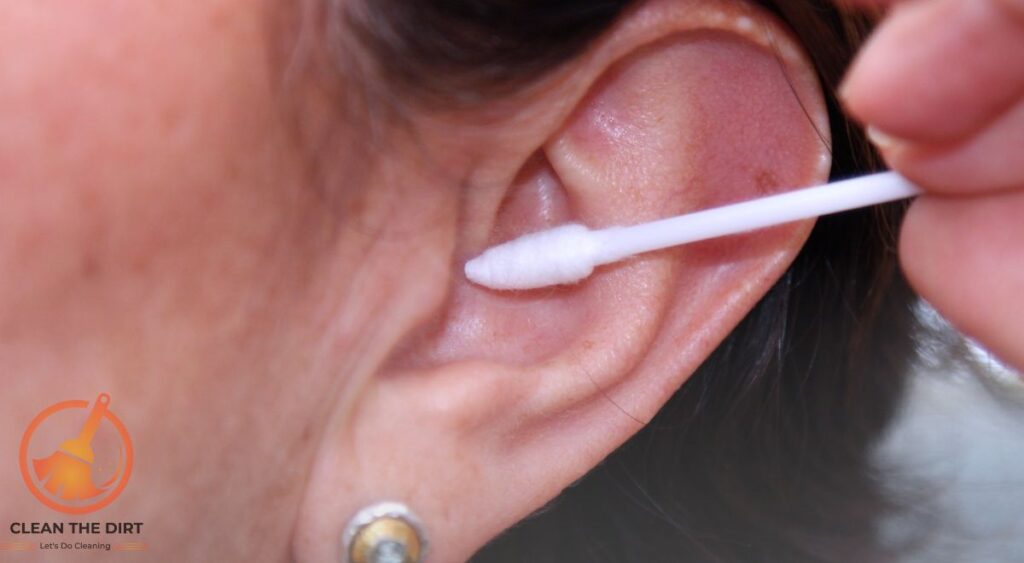
Step 5: Apply the Cleaning Solution if Necessary
If the drainage is more stubborn, you may need to use a few drops of the cleaning solution in the ear. Gently pull the outer ear upward and back to open the ear canal slightly. Then, using a dropper, place a few drops of the solution into the ear. Allow it to sit for a moment, then let it drain out naturally by tilting the head to the side.
Remember, when learning how to clean ear drainage from tubes, never force any liquid into the ear, as this can cause discomfort or damage.
Step 6: Dry the Ear
After cleaning, use a clean towel or soft cloth to gently pat the area around the ear dry. Avoid rubbing, as the skin around the ear can be sensitive. Ensuring the ear is dry helps prevent any moisture-related complications, such as infections.
Final Thoughts
Knowing how to clean ear drainage from tubes properly is essential for maintaining ear health and ensuring that the tubes function as they should. By following these steps, you can effectively manage ear drainage at home, reducing the risk of complications and keeping the ear tubes in good working order. If at any point you feel unsure or the drainage persists, don’t hesitate to reach out to a healthcare provider for guidance.
Additionally, if you’re interested in more ear care tips, you might find our article on how to clean your ears with hydrogen peroxide useful, or learn how to clean earring holes to avoid irritation. We also provide advice on how to clean your ears in the shower for a convenient approach to ear hygiene.
Common Mistakes to Avoid
When it comes to maintaining ear health, especially with ear tubes in place, avoiding certain common mistakes is just as important as knowing how to clean ear drainage from tubes. These mistakes can lead to discomfort, infections, or even damage to the tubes, so it’s crucial to handle the process with care.
1. Using Cotton Swabs Incorrectly
One of the most frequent mistakes people make is inserting cotton swabs too far into the ear canal. While it may seem like a good way to remove drainage, it can actually push debris deeper into the ear, causing blockages or even damaging the ear drum and tubes. When learning how to clean ear drainage from tubes, remember that cotton swabs should only be used to clean the outer ear gently, never inserted into the ear canal.
2. Over-Cleaning
It’s easy to think that more cleaning equals better results, but over-cleaning can actually do more harm than good. The ear canal is delicate, and excessive cleaning can irritate the skin, leading to further drainage or even infections. Understanding how to clean ear drainage from tubes involves recognizing when enough is enough. If you find yourself cleaning frequently, it might be a sign of an underlying issue that requires medical attention.
3. Ignoring Persistent Symptoms
Another common mistake is overlooking or ignoring persistent symptoms like continuous drainage, pain, or swelling. These could be signs of an infection or other complications that need professional care. While it’s good to know how to clean ear drainage from tubes, it’s equally important to recognize when it’s time to seek help. If the symptoms persist despite your efforts, consulting a healthcare provider is the best action.
4. Using Harsh or Unapproved Solutions
Not all cleaning solutions are safe for use in the ear, especially when ear tubes are involved. Using harsh chemicals or unapproved solutions can cause irritation or damage to the ear canal and tubes. Stick to gentle options like saline solution or a doctor-recommended ear-cleaning solution when learning how to clean ear drainage from tubes. This guarantees the process’s efficacy and safety.
5. Applying Too Much Pressure
Whether you’re using a cotton swab, cloth, or your fingers, applying too much pressure during cleaning can cause damage. The ear is a sensitive area, and rough handling can irritate the skin or even dislodge the tubes. When practicing how to clean ear drainage from tubes, be sure to use gentle, careful movements to avoid any unnecessary harm.
6. Forgetting to Dry the Ear
After cleaning, it’s crucial to dry the ear thoroughly. Leaving the ear damp can create a breeding ground for bacteria, leading to infections. A simple pat-down with a clean, dry cloth is all it takes to keep the area dry and reduce the risk of complications.
By steering clear of these common mistakes, you can ensure that you’re cleaning ear drainage from tubes safely and effectively. Proper technique is key to maintaining ear health and ensuring the longevity and effectiveness of the tubes. Understanding how to clean ear drainage from tubes is just the beginning, avoiding these pitfalls will help you keep the process smooth and complication-free.
Additional Tips for Maintaining Ear Tube Health
Keeping ear tubes in good condition goes beyond just cleaning them. Proper care and preventive measures can make a significant difference in maintaining ear health and ensuring the tubes function effectively. Here are some additional tips to help you manage ear tubes and understand how to clean ear drainage from tubes more efficiently.
1. Regular Monitoring
It’s important to keep a close eye on the ears, especially if ear tubes are newly inserted. Regularly check for any signs of drainage, discomfort, or unusual symptoms. If you notice persistent or abnormal drainage, it’s a good idea to consult a healthcare professional. By staying vigilant, you can address potential issues early and reduce the need for frequent cleaning.
2. Avoiding Water Exposure
One of the key aspects of maintaining ear tube health is minimizing water exposure. Water can enter the ear through the tubes and cause infections or irritation. When bathing, showering, or swimming, consider using waterproof earplugs or custom-fitted ear molds to keep the ears dry. If water does get into the ear, be sure to dry it thoroughly to prevent any complications.
3. Using Protective Gear
In situations where water exposure is unavoidable, such as swimming, using protective gear is essential. Waterproof earplugs, swim caps, or ear bandages can provide an extra layer of protection. This not only helps prevent water from entering the ear but also reduces the chances of needing to learn how to clean ear drainage from tubes frequently.
4. Keeping Ears Dry
Beyond avoiding water, it’s important to keep the ears dry in general. After any cleaning or exposure to moisture, gently pat the ear dry with a soft cloth. Ensuring the ear area is dry helps prevent bacterial growth and reduces the risk of infections, which can cause or worsen drainage.
5. Maintain a Clean Environment
Keeping your living environment clean and free from allergens can help minimize the chances of ear infections or irritations that lead to drainage. Regularly dusting, vacuuming, and using air purifiers can create a healthier environment, reducing the frequency of needing to figure out how to clean ear drainage from tubes.
6. Know When to Seek Medical Advice
While these tips can help you manage ear tube health, there are times when professional advice is necessary. If you notice signs of infection, such as redness, swelling, or foul-smelling drainage, or if the drainage persists despite your efforts, it’s important to consult with a healthcare provider. They can guide on whether additional treatment is needed or if the tubes need to be adjusted or removed.
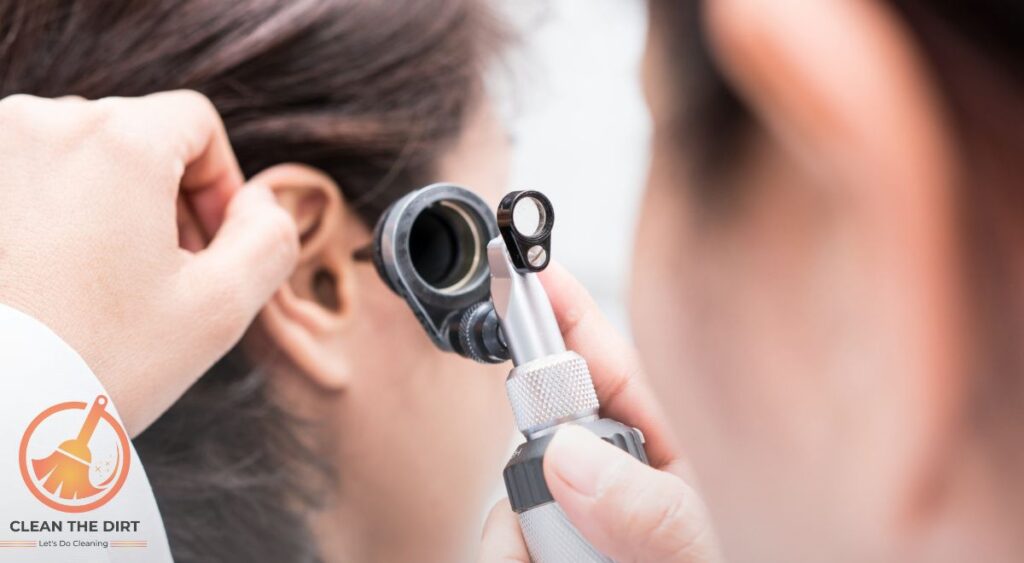
By incorporating these additional tips into your routine, you can enhance the effectiveness of ear tubes and reduce the need for frequent cleaning. Understanding how to clean ear drainage from tubes is just one part of maintaining overall ear health. Taking preventive measures and being proactive can make all the difference.
Conclusion
Taking care of ear tubes involves more than just knowing how to clean ear drainage from tubes, it’s about maintaining overall ear health and ensuring that the tubes continue to function effectively. By following the steps outlined in this guide, you can manage ear drainage safely and keep your or your child’s ear tubes in good condition.
Regular cleaning, using the right techniques, and avoiding common mistakes will help you maintain the health of your ear tubes and prevent complications. Remember, this guide on how to clean ear drainage from tubes involves not only the physical cleaning process but also understanding when to seek professional help if issues persist.
Incorporating the additional tips provided, such as avoiding excessive water exposure and keeping the ear dry, will further support the longevity and effectiveness of the ear tubes. Proper care and attention are key to ensuring that the tubes serve their purpose without causing additional problems.
If you ever find yourself unsure or facing persistent symptoms despite your efforts, don’t hesitate to consult a healthcare professional. They can offer guidance and address any concerns you might have, ensuring that your approach to how to clean ear drainage from tubes is both safe and effective.
To ensure a comprehensive approach to personal hygiene, explore our guide on how to clean under nails. For more tips, check out our article on how to clean your eyes naturally, and don’t miss our guide on how to clean your teeth with baking soda. These resources provide valuable insights to help you maintain a thorough and effective personal care routine.
Here’s a quick comparison of various methods for cleaning ear drainage from tubes. Each option has its benefits and drawbacks, so use the table below to find the best approach for your needs.
| Method | Pros | Cons |
|---|---|---|
| Saline Solution | – Gentle and effective for loosening drainage – Widely recommended by doctors | – May not remove stubborn drainage – Requires proper preparation |
| Sterile Cotton Swabs | – Useful for cleaning visible drainage – Easy to use | – Can push debris further into the ear – Risk of irritation if used improperly |
| Ear Cleaning Drops | – Specifically designed for ear care – Helps dissolve and flush out drainage | – May cause discomfort for some – Should only be used as directed by a doctor |
| Dry Cloth or Towel | – Simple and non-invasive – Effective for drying the ear after cleaning | – Does not address the drainage directly – Only useful for finishing the cleaning process |
| Professional Ear Cleaning | – Thorough and safe – Done by a healthcare professional | – More expensive – Requires a visit to the doctor |
In summary, knowing how to clean ear drainage from tubes is an essential skill for maintaining ear health and ensuring the proper function of ear tubes. With the right approach and precautions, you can keep the process smooth and keep your ears in top shape.
Frequently Asked Questions (FAQs) for How to Clean Ear Drainage From Tubes?
Can I use hydrogen peroxide to clean ear drainage from tubes?
It’s generally not recommended to use hydrogen peroxide for cleaning ear drainage from tubes. Hydrogen peroxide can be too harsh and may irritate. Instead, use a gentle saline solution or a cleaning solution recommended by your doctor.
How often should I clean ear drainage from tubes?
The frequency of cleaning depends on the amount of drainage and any symptoms you might be experiencing. Typically, you should clean the drainage whenever you notice it, but avoid over-cleaning. If drainage is persistent or excessive, consult with your healthcare provider for specific advice.
What should I do if I notice persistent drainage or discomfort?
If you experience persistent drainage, discomfort, or other symptoms like pain or fever, it’s important to seek medical advice. These could be signs of an infection or other issues requiring professional attention.
Is it safe to use cotton swabs to clean ear drainage?
Cotton swabs should only be used gently and never inserted deeply into the ear canal. They are best used to clean the outer ear. For cleaning ear drainage from tubes, be cautious not to push debris further into the ear.
Can I swim with ear tubes, and how can I protect my ears?
Swimming with ear tubes can increase the risk of water entering the ear, which can lead to infections. To protect your ears, use waterproof earplugs or ear molds specifically designed for swimming. Avoid submerging your head in water if possible.
How can I prevent ear infections while using ear tubes?
To prevent ear infections, keep the ears dry, avoid inserting objects into the ear canal, and maintain a clean environment. Regularly monitor the condition of the ear tubes and seek medical advice if you notice any unusual symptoms or persistent drainage.
What signs indicate I should consult a healthcare provider about my ear tubes?
Consult a healthcare provider if you notice signs of infection such as redness, swelling, or a bad smell, or if the drainage is persistent and not improving with at-home care. A professional evaluation can help address any underlying issues and ensure proper treatment
You May Also Like: How to Clean Ear Piercing With Salt Water? Ultimate Guide


